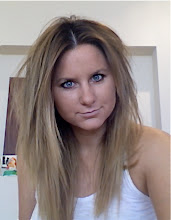I'm going to use an analogy from Adschool, told by Ben O'Brien from Kastner&Partners (who work on the Red Bull brand in Australia). He said that advertising is like tennis balls. If you imagine being thrown a load of tennis balls all at once, you can't (usually!) catch any of them. But if you are thrown one, you are very likely to catch it. So that's what an ad is like. If you are thrown all this information, you don't take any of it in, but if you are just given one piece of information, you are much more likely to remember it. It's also a bit of a psychological thing, are minds get bored easily, so make it as easy as possible by just having one focus.
Clients generally want to rave about their product, they have lists and lists of features that they want everyone to know about...naturally! But it's the advertisers job to pick ONE defining thing about it. A different angle. And once that has been decided (usually by the account managers), it is then presented as a brief to the creative department, who can work around that idea and come up with as many different ideas surrounding it. David Ogilvy said that a really tight brief, that is extremely detailed, is much better for creatives, because it gives the freedom within the boundries that the account managers set, meaning they won't go off on one and miss the point of the campaign!
The worst word to see in a campaign is 'and'. That means the client has won. And fair play, they have all the money, but advertisers are supposed to be experts on what sells, and what resonates. And 'ands' never resonate. Of course their are exceptions, but I can't name one. There has to a be single focus, so x bars are nutritious OR delicious, not nutritious and delicious. It seems like it wouldn't make that much difference, but you will be surprised at how many good ads never have reels of information in them.
It's important to know, that no one wants to look at your ad. People pay extra, for tv that can fast-forward through them. So they HAVE to be interesting, and have to be thought-provoking, and have to be exciting! You have to be unexpected, because people are curious by nature, and like being surprised by an unexpected idea. To give you some ideas, couple of examples...
Blackcurrent Tango: http://www.youtube.com/watch?v=fGjizZCXetk Why not talk to someone who doesn't like tango?!
Marmite: Why not admit that some people don't like your product?!
IWC: http://ialreadyhaveawatch.com/2009/06/iwcs-clever-ambient-advertising-bus-wrist-straps/ Why not use media channels in a clever way?!
IWC: http://ialreadyhaveawatch.com/2009/06/iwcs-clever-ambient-advertising-bus-wrist-straps/ Why not use media channels in a clever way?!
I'll be using some more examples about more campaigns that I like, but hopefully it demonstrates how doing the unexpected can really work in your favour, even it intuitively it seems a bit risky! That's when the best campaigns are created in my opinion.
